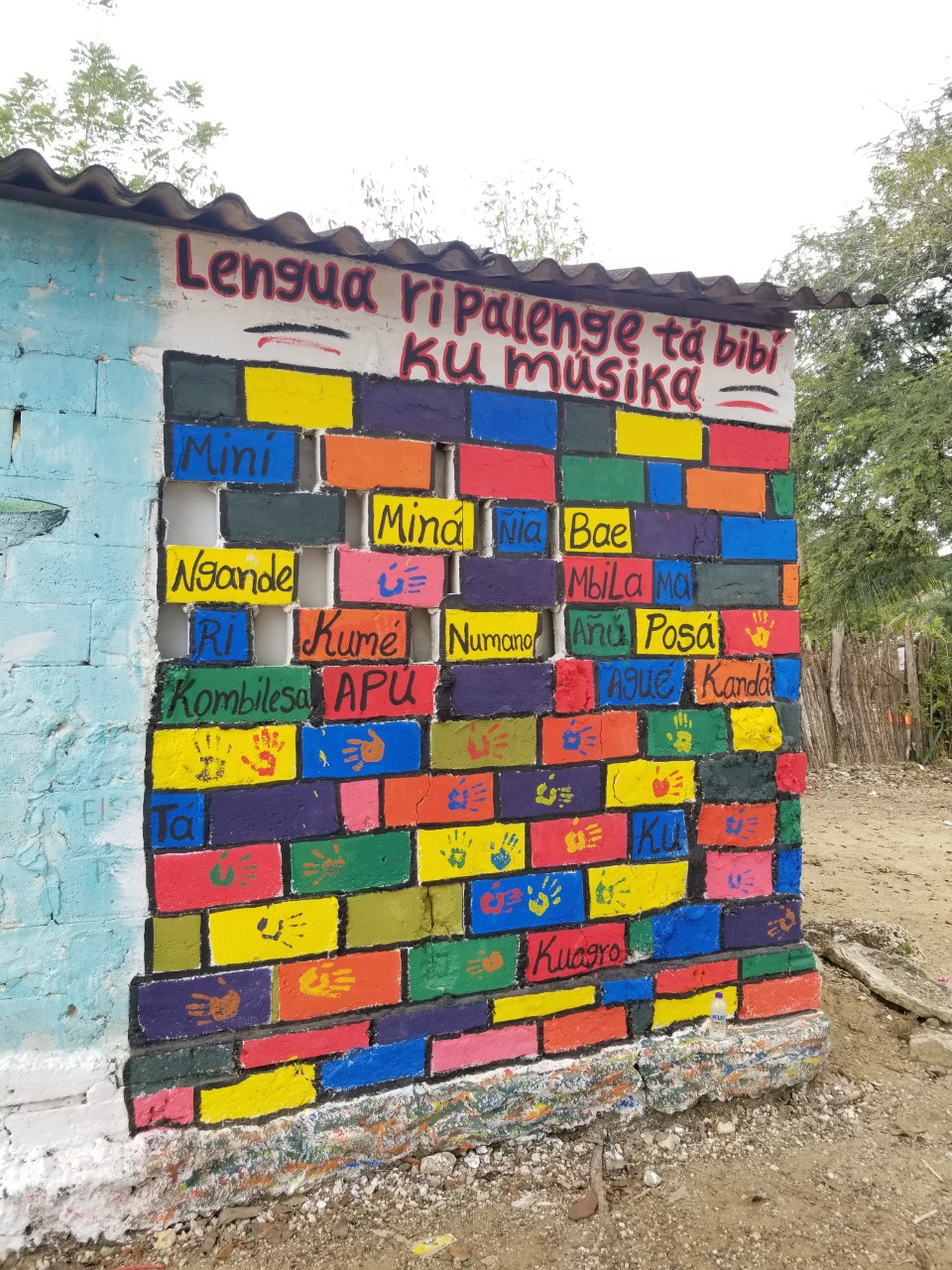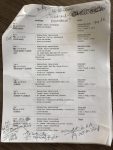San Basilio de Palenque – Exploring Colombia
Eva Michelle Wheeler is our guest blogger this week. She is taking us on a delightful linguistic journey through Colombia. Today she explores San Basilio de Palenque.
Title image: Eva below I HEART being Black. Local artist, AfroNeto, created this mural.
San Basilio de Palenque: The Rationale

Map of the route from Cartagena to San Basilio de Palenque
Many Colombian cities compete for the attention of the first-time visitor: Bogotá, Medellín, Cali, Cartagena.
These well-known cities belong on any Colombia itinerary. But I want to share my experience visiting a lesser-known town: San Basilio de Palenque. And to make the case for why more people should see and experience the “first free black town in the Americas.”
My visit was five years in the making. I first learned about the town in 2014 when I taught a course on Spanish linguistics. The textbook told us that Palenque was the birthplace of the only Spanish-based creole in the world: palenquero ‘[the language] of Palenque.’
Blacks escaped from slavery founded the town in 1603. And it is the first settlement of free blacks in the Americas. Thus San Basilio de Palenque is a site of singular linguistic, cultural, and historical importance. So, when I began to plan my trip to Colombia, I knew it had to be on my itinerary.

My bracelet
San Basilio de Palenque: From A Spanish Lens to Bantu Origins
San Basilio de Palenque has a population of approximately 3,500 residents. It is located about 50 kilometers (31 miles) to the southeast of Cartagena. The trip takes a little over one hour. After weighing a few different options, I decided to visit with a tour company called Experience Real Cartagena.

A mural with the town’s Bantu name: Palengé
On the bus ride from Cartagena, our tour guide, Chris, gave us the history of Palenque. He prepared us for what we would see and experience in the town.
“I am going to teach you a very important word,” he said. “Make sure you pay attention. You will use it a lot when we get there.”
My ears perked up.
“Asina we,” he said. “This is how you say ‘Thank You’ in Palenque. And you should know that Palenque speakers call their language sunto.”
Sunto. The word echoed in my head. I had not once considered how the speakers themselves referred to their language.
Chris also told us that San Basilio de Palenque is the Spanish name for the town. Its Bantu name is Palengé. I then thought about how a Spanish lens had filtered everything I knew about this town. And, in that moment, I realized how urgent it was for me to see and experience Palengé for myself.

A mural with different words in sunto/palenquero
San Basilio de Palenque: Your Home Away From Home
We first glimpsed Palengé through the bus windows. We parked in front a plaza and hopped off to meet our local guide. He explained the town’s history using the local language. Chris translated everything into English.

“Ata uto begá,” the local guide told us. “Welcome to your home away from home.” Palengé is known as a “little piece of Africa in the Americas.”
The town’s African heritage was visible in its language, food, music, education and religion. And my mind drifted to my own internal dilemma. I descended from Africa. But I have no cultural memory of her. Here in Palenque the people have a tangible connection with Africa. I wondered what it would feel like to have that type of connection with your heritage. What it would be like if African Americans had never lost our cultural memory of Africa.
San Basilio de Palenque: The Men and Women

A mural of founder Benkos Biohó in Palengé
We then walked into the plaza to see two murals of Afro Colombian women.


“Women have great value in Palenque,” Chris said. “Because the magic of a black woman brought freedom to all of us.” He went on to describe how women had played a key role in establishing the town of Palengé and pushing for Colombian independence.
Our next stop was the home of a woman known as the head of the palenqueras. These are 49 colorfully-dressed women who sell fruit and sweet treats in the walled city of Cartagena each day.

Eva with three palenqueras in Cartagena
The woman welcomed us warmly and invited us into her backyard. There we watched as she stirred coconut and guava in an iron kettle over an open fire. We learned the kettle’s delicious aromas were the first stage of the treat known as the cocada.

Our hostess invited us to try another local treat called enyucado—a cassava dessert served on a piece of coconut shell.

Enyucado
I thanked her using the phrase that Chris had taught us: asina we.
San Basilio de Palenque: Town Center
Next we headed to the main plaza of Palengé. In the center stands a statue of the town’s founder, Benkos Biohó. He led the rebellion that led to the creation of Palengé as the first community of free blacks in the Americas. The statue shows Biohó holding his broken chains and reaching up toward the sky.

On either side of the plaza are murals by the local artist named AfroNeto. They lean into the town’s place in the broader African diaspora with themes like “I love being black” and “Black Lives Matter”. See title image.
Our final stop on the tour was to a music school called Escuela de Danzas Batata. As the students demonstrated their dance and drum skills, I noticed the joy radiating from their faces. After the demonstration the band called me up for a trilingual version of the birthday song: Sunto, English, and Spanish.
As I danced to the rhythm of the familiar song, I felt the things that still connect us as members of the African diaspora. The food, the rhythm, the music, the joy, the deep sense of connection. It reminded me that we have so much in common. Even when we speak different languages. And when we call our commonalities by different names.
For more on the sights and sounds of Palengé, watch my YouTube video San Basilio de Palenque, Colombia! Africa in the Americas
See also: Colombia: A Rich Linguistic Experience
Categorised in: Adventure, Blog, South America
This post was written by Julie Tetel Andresen
You may also like these stories:
- google+
- comment



